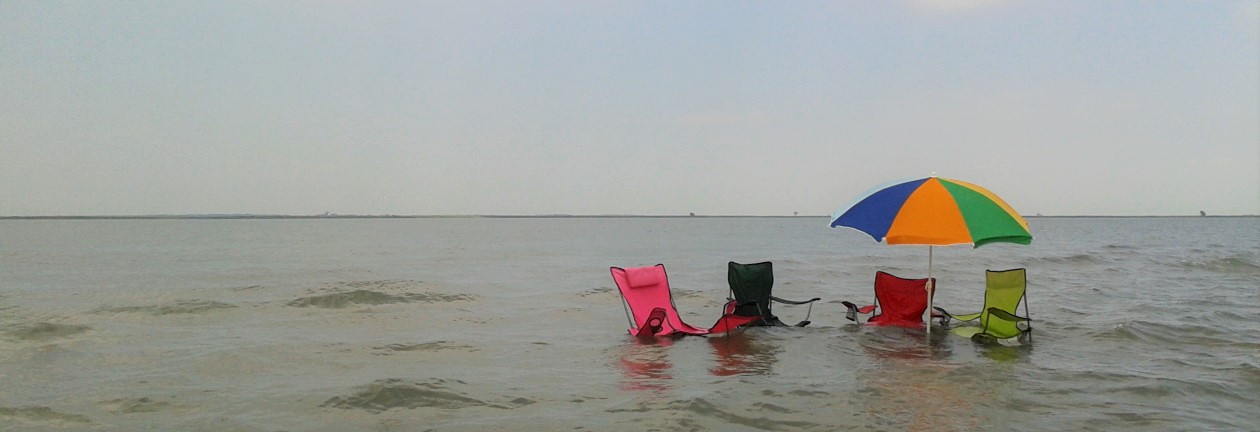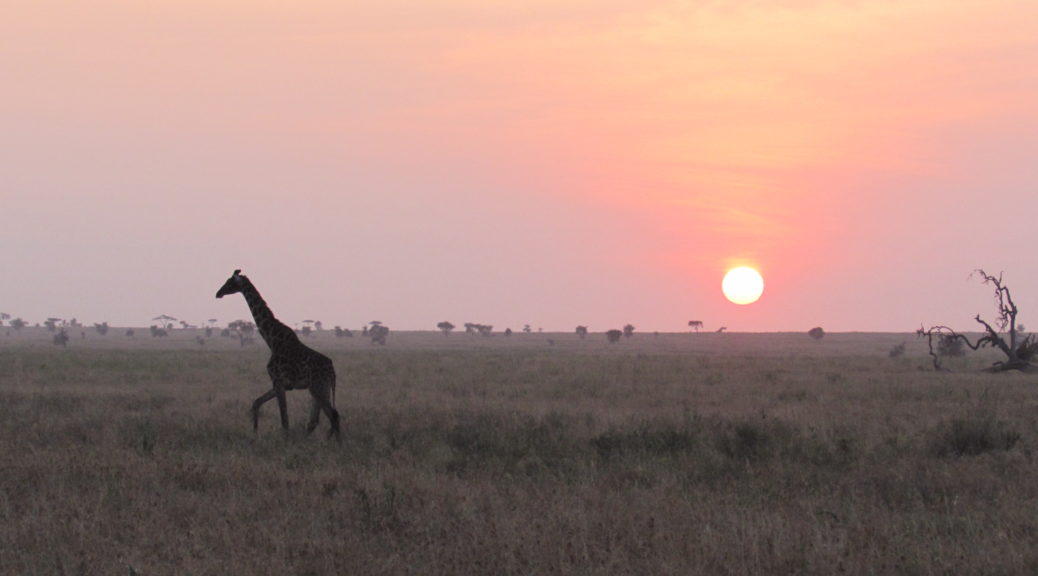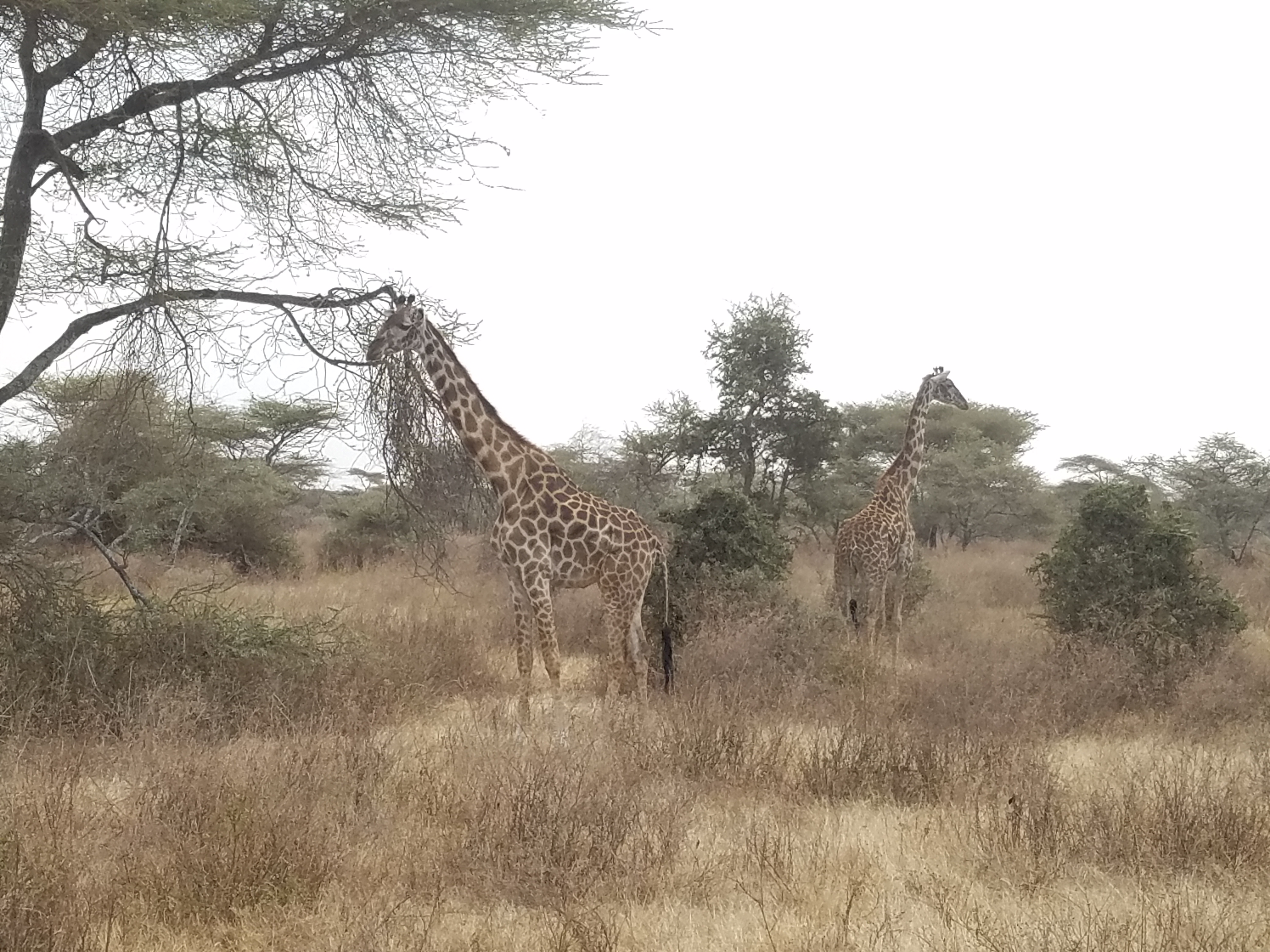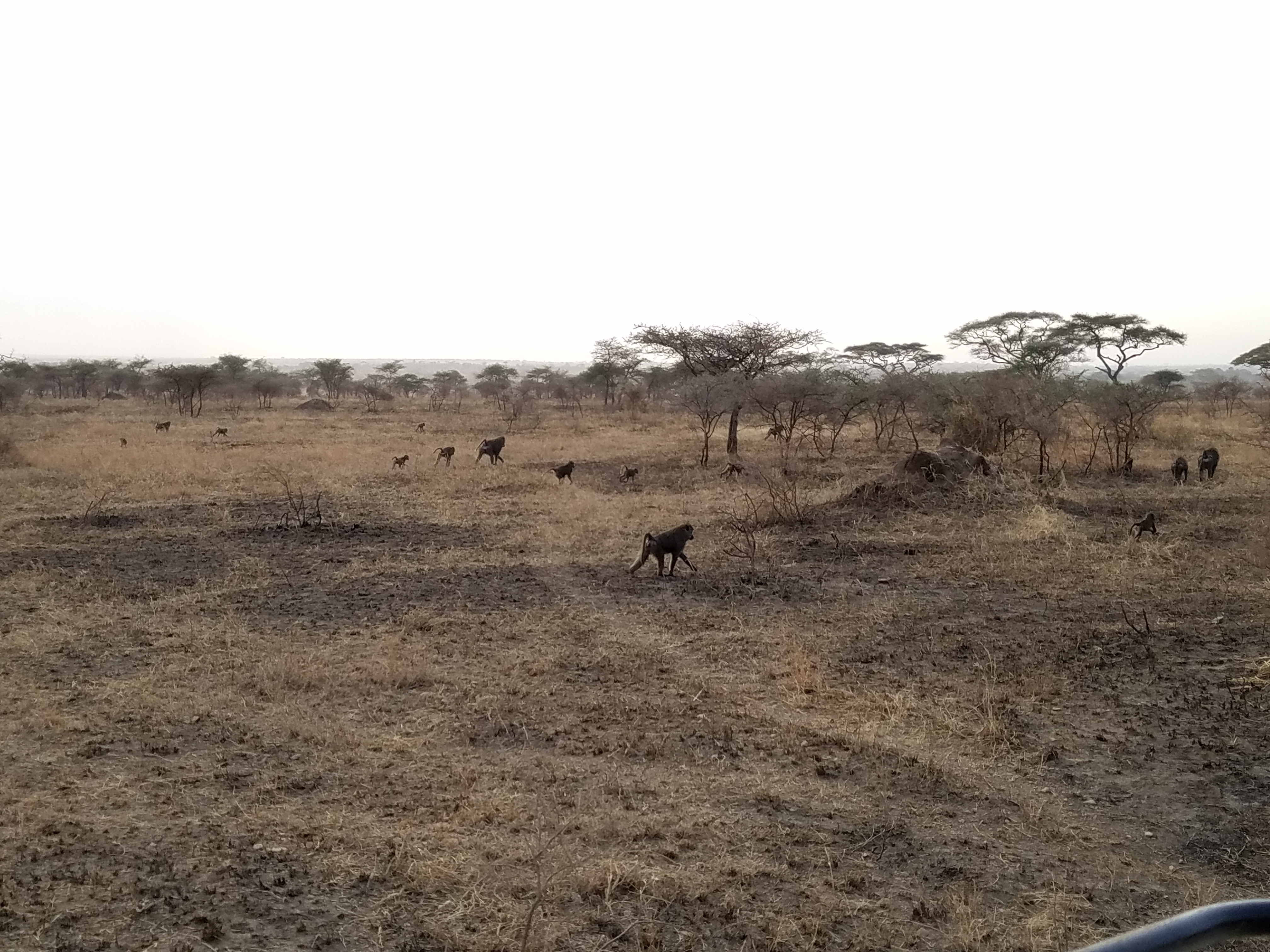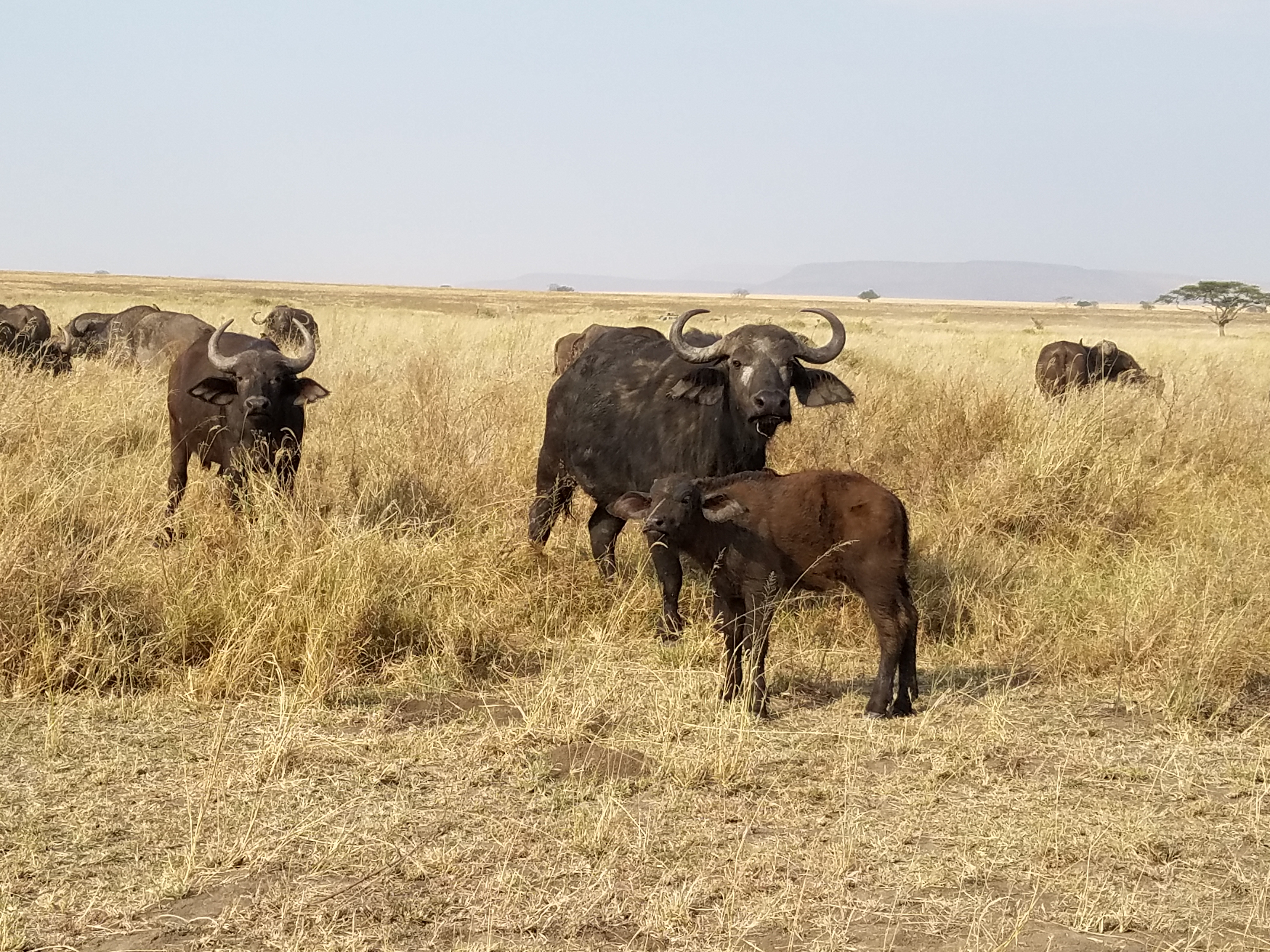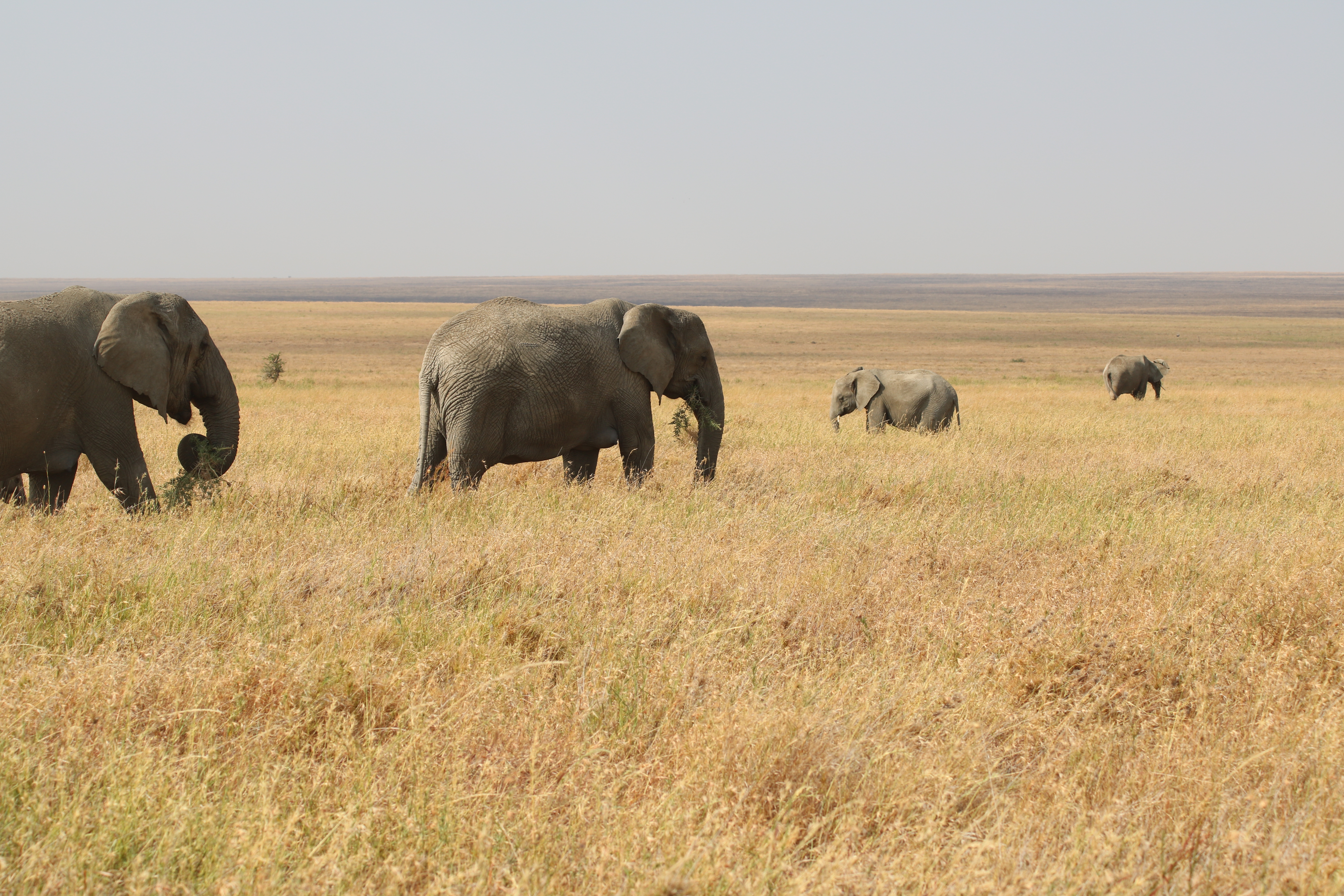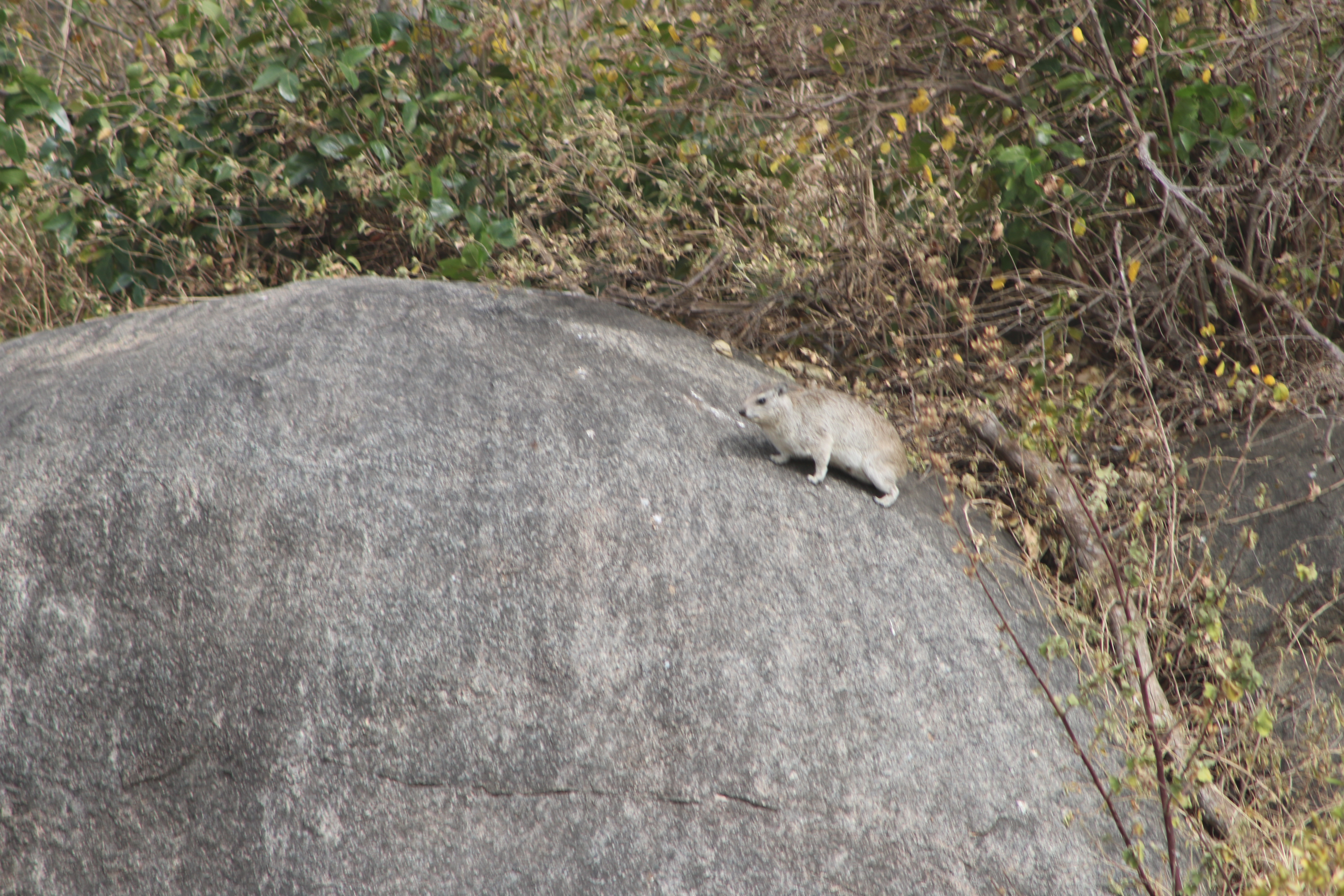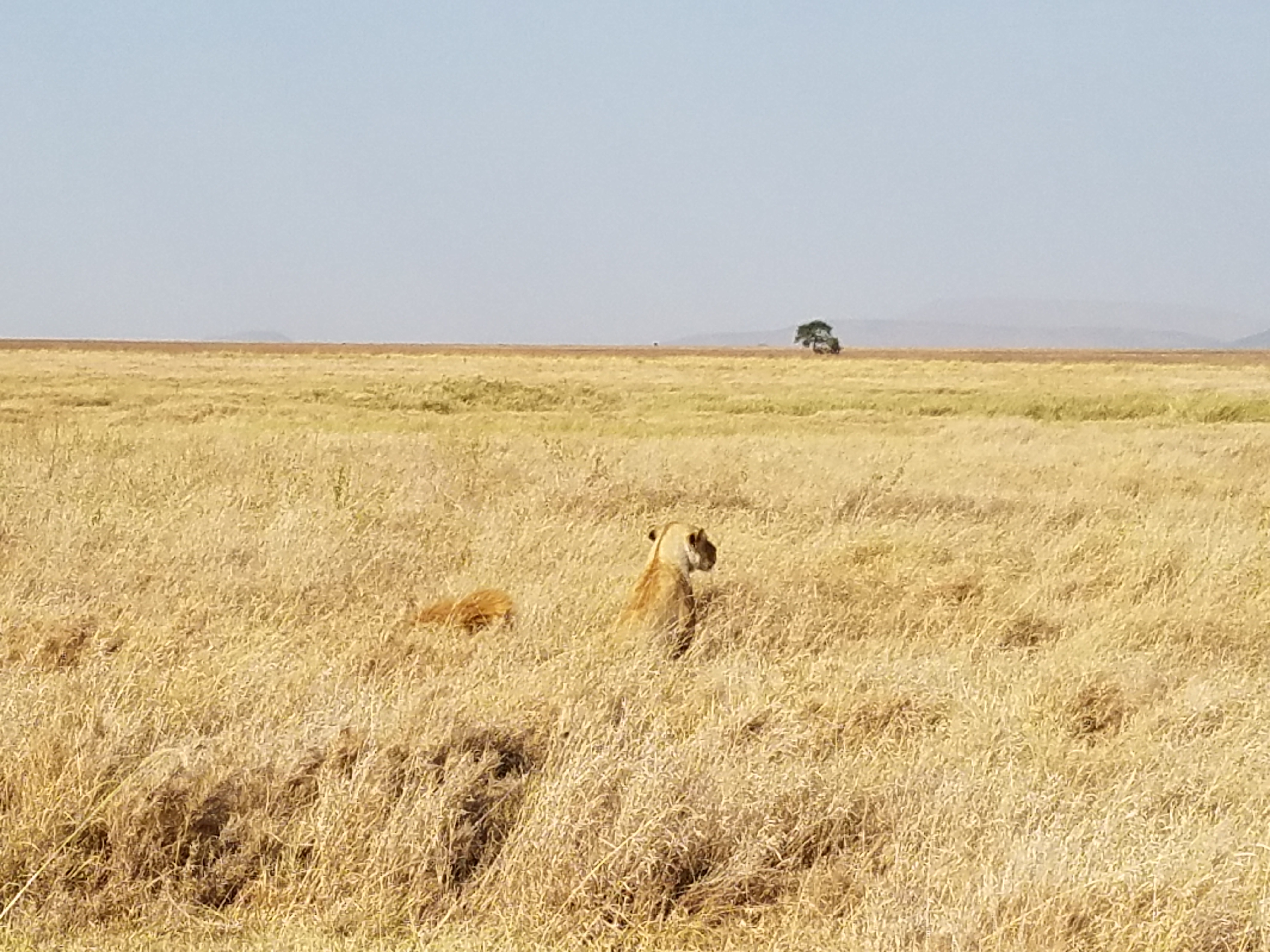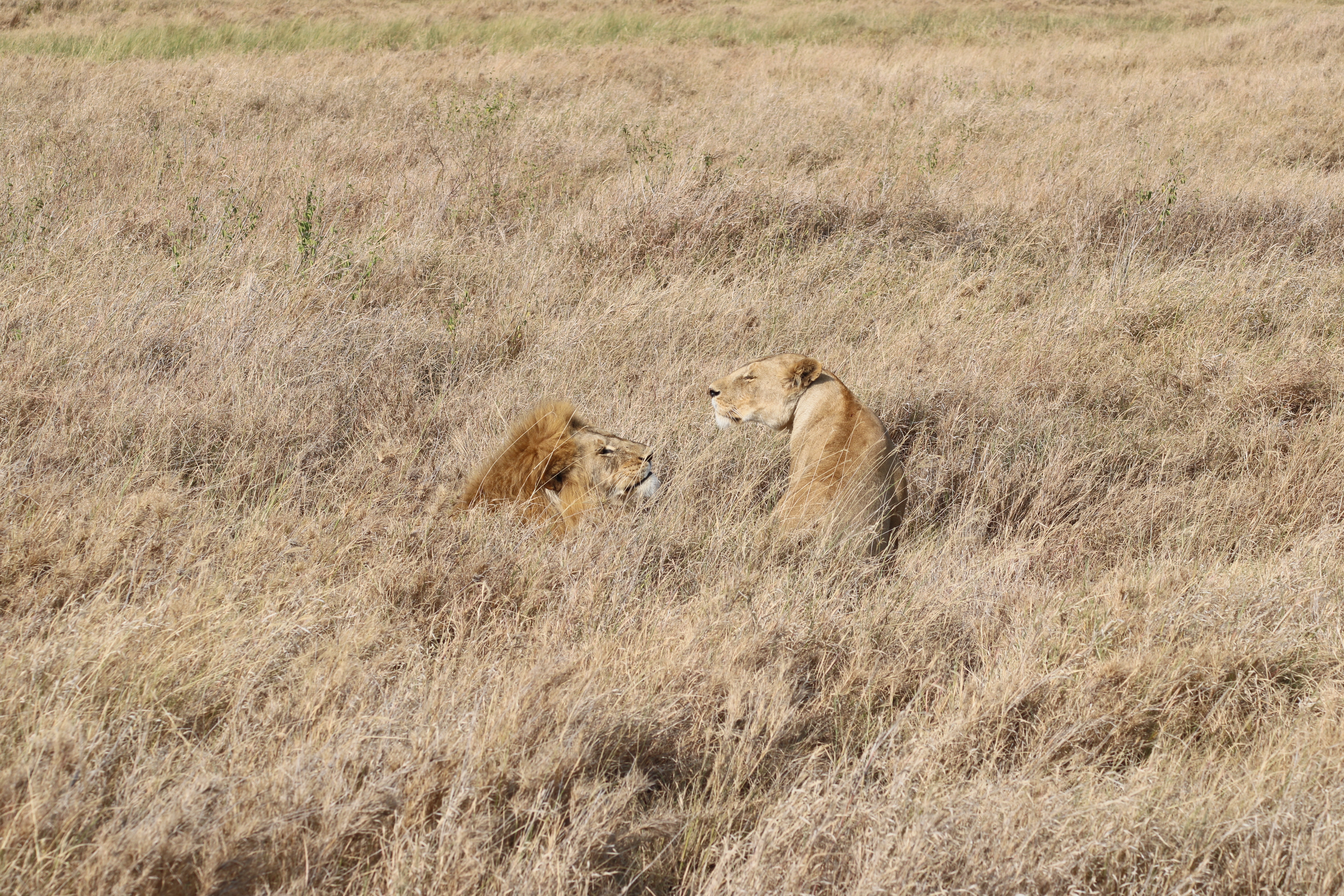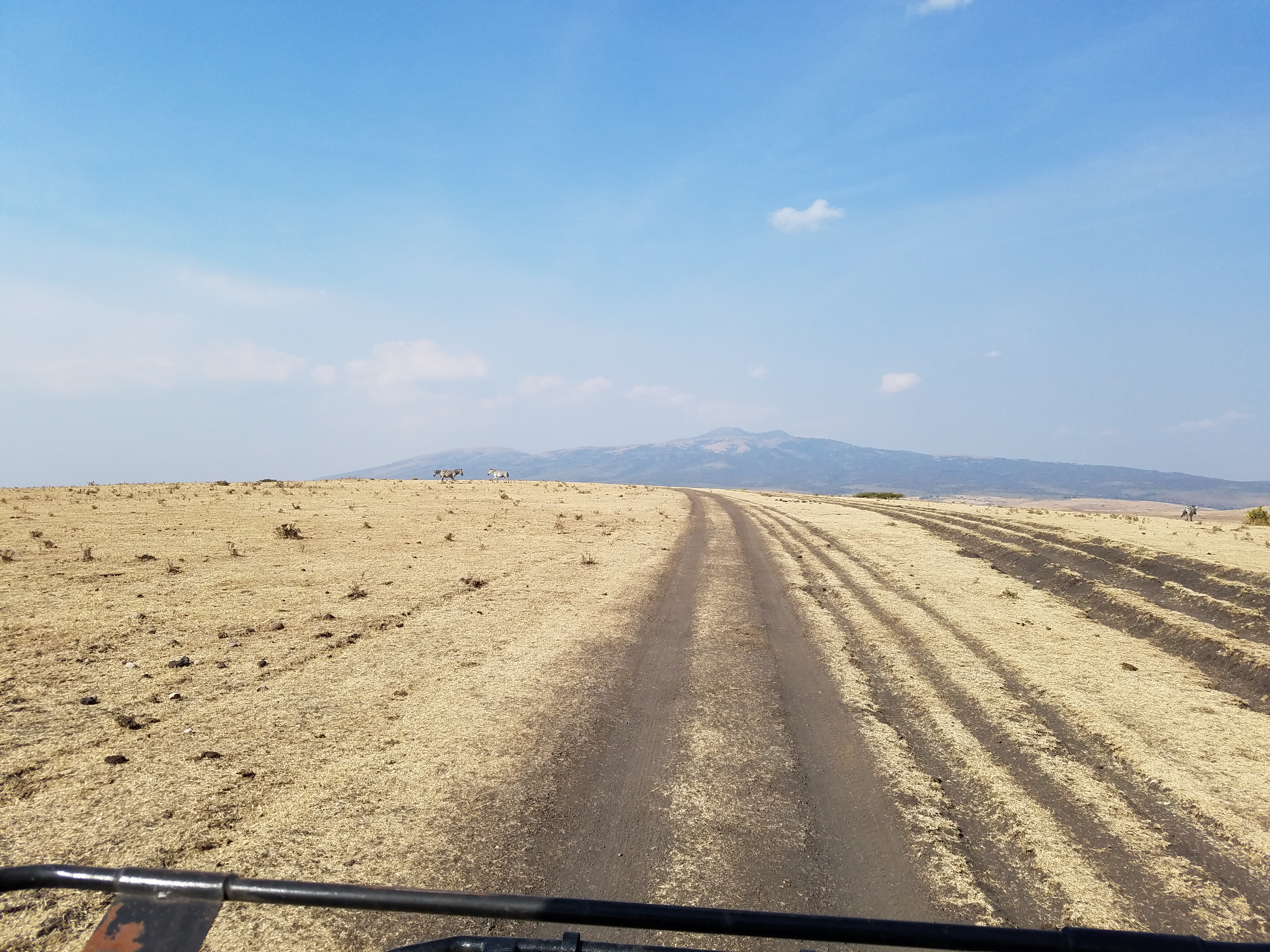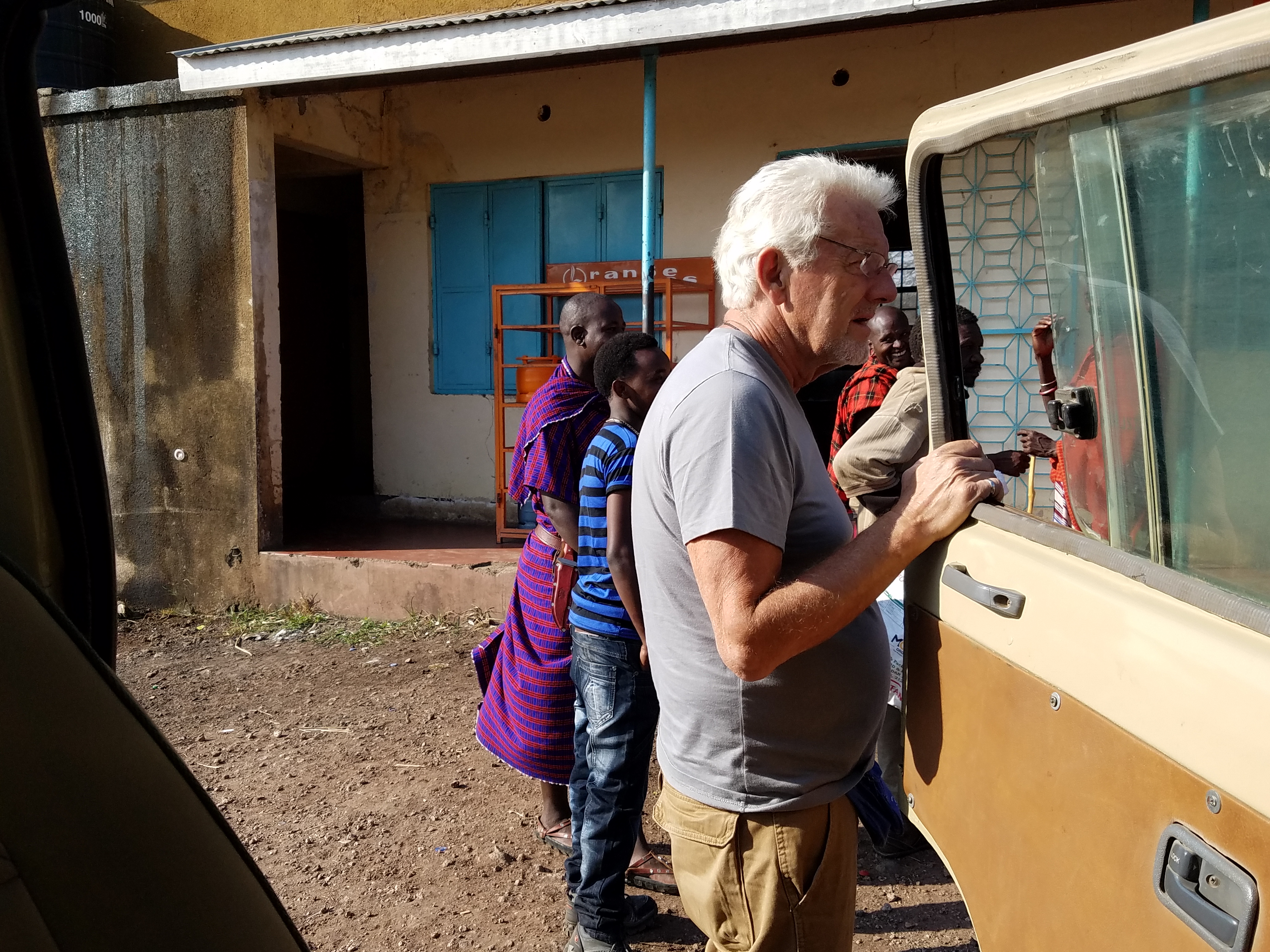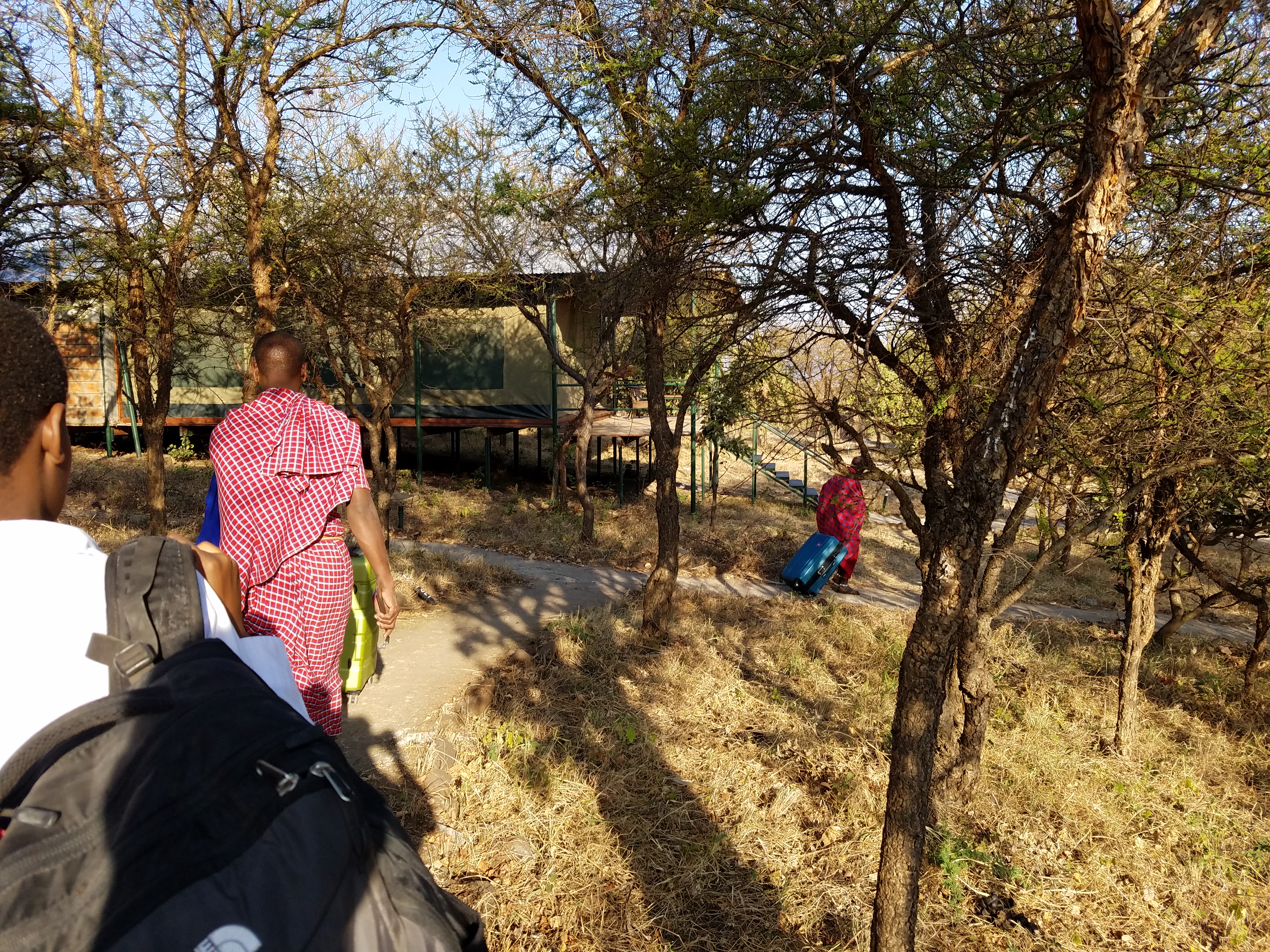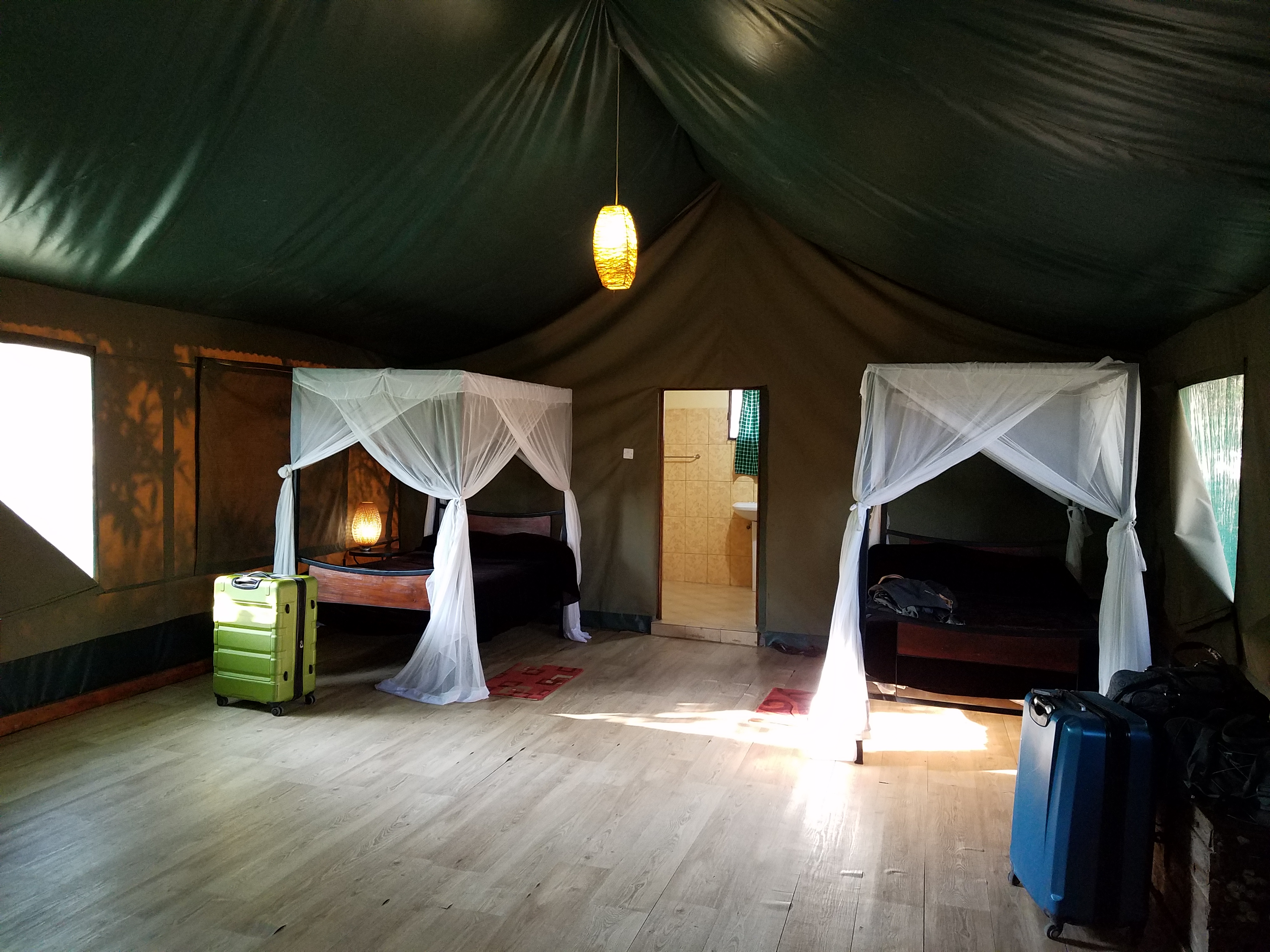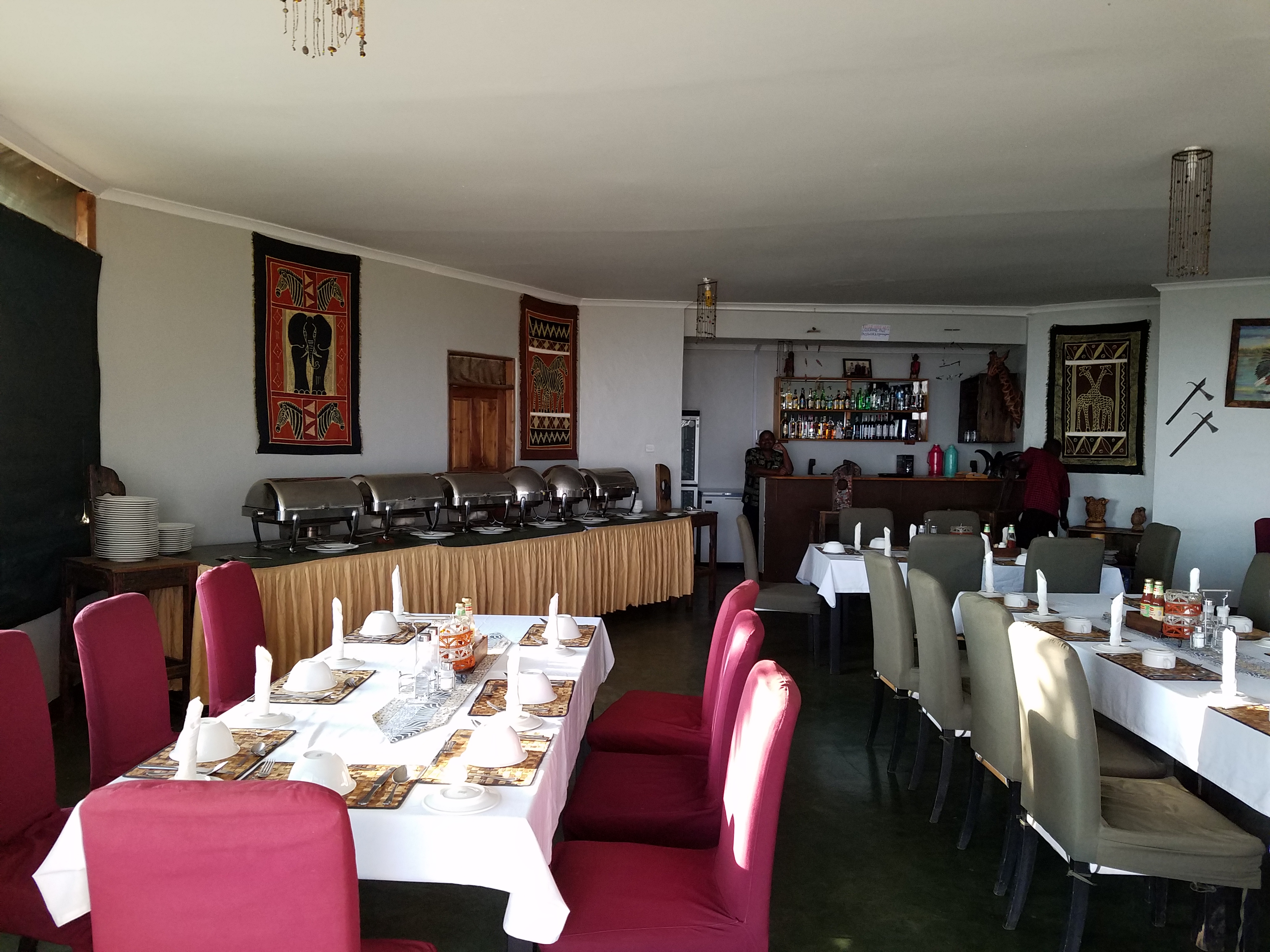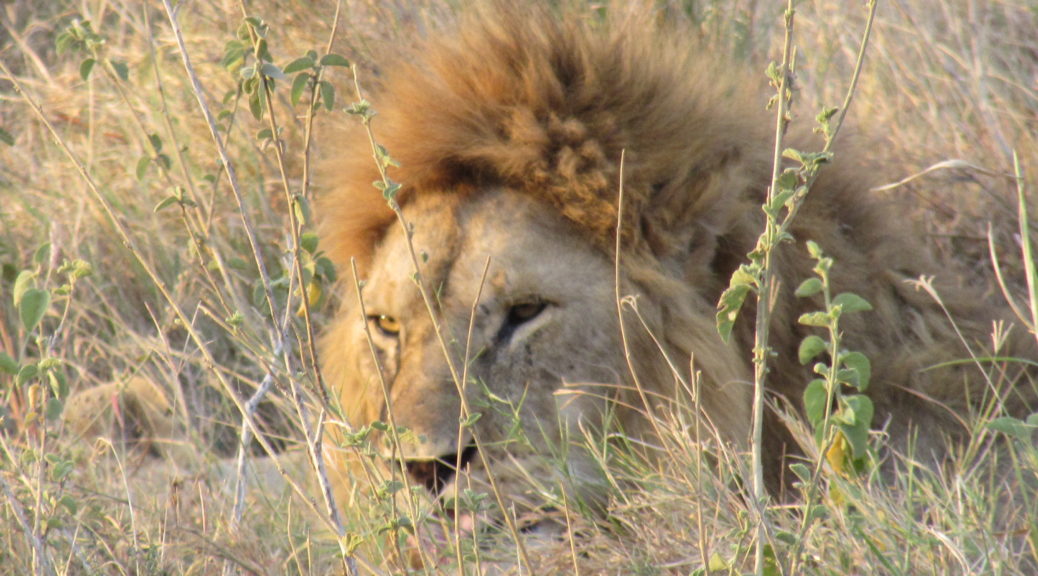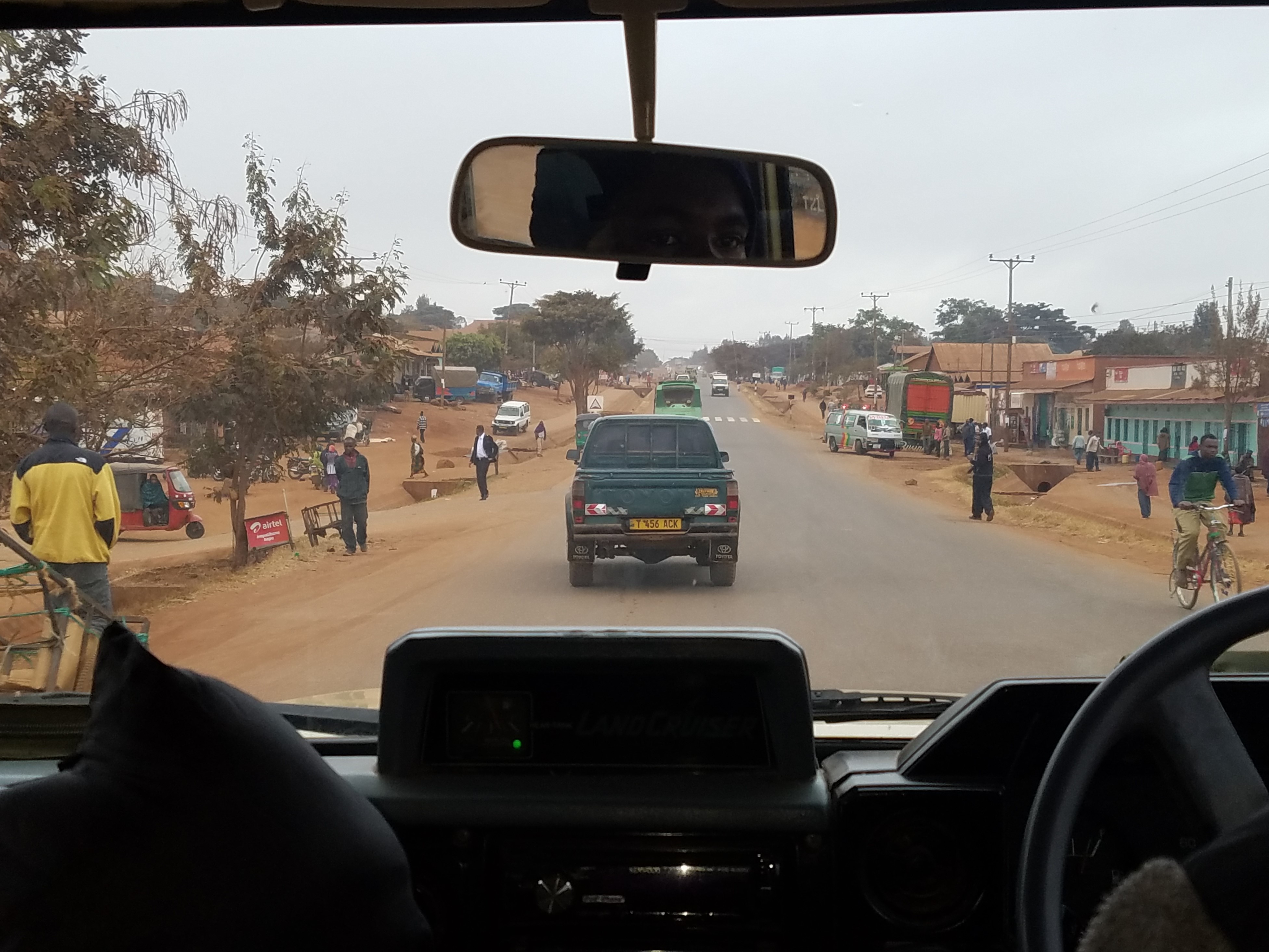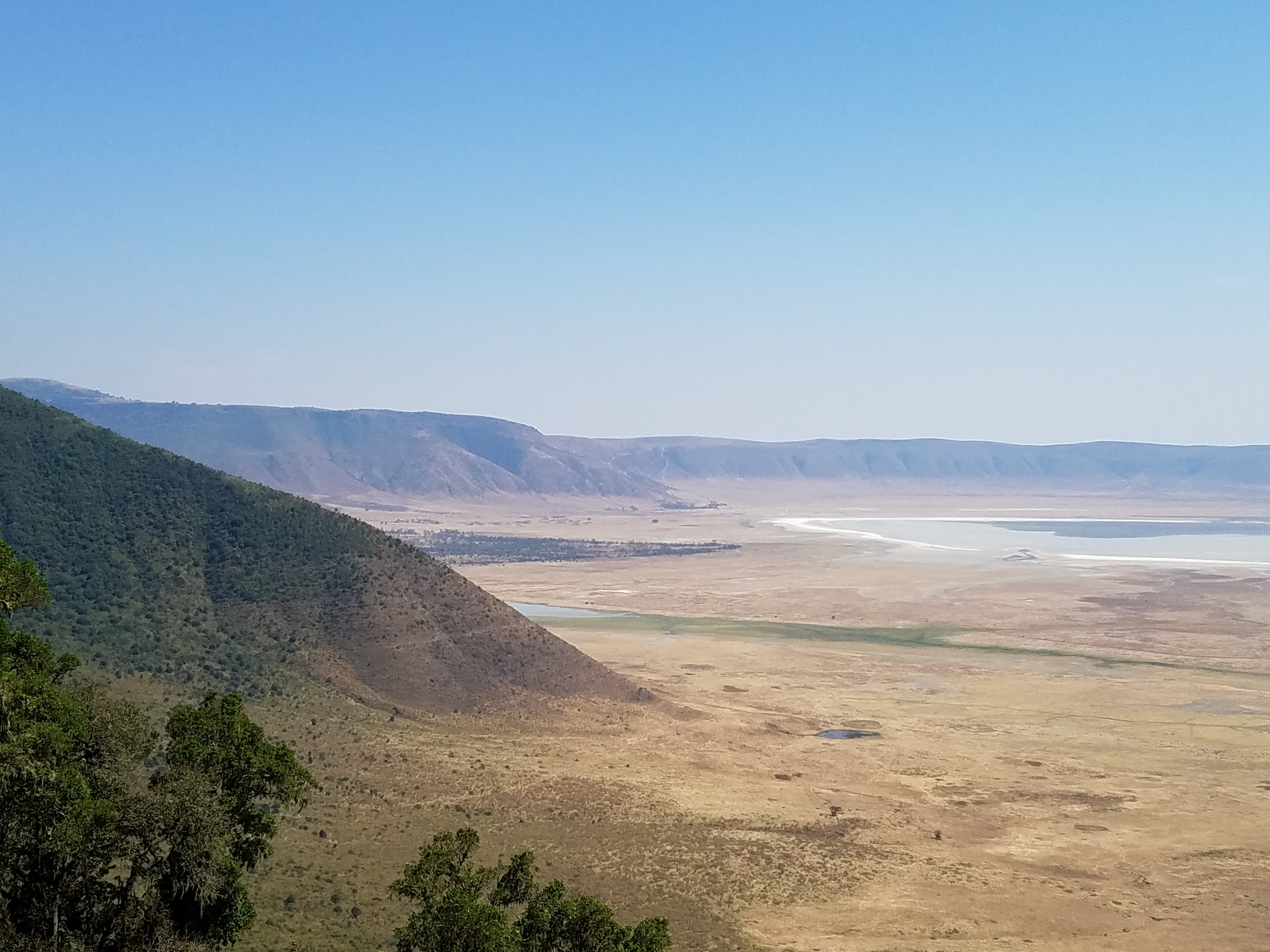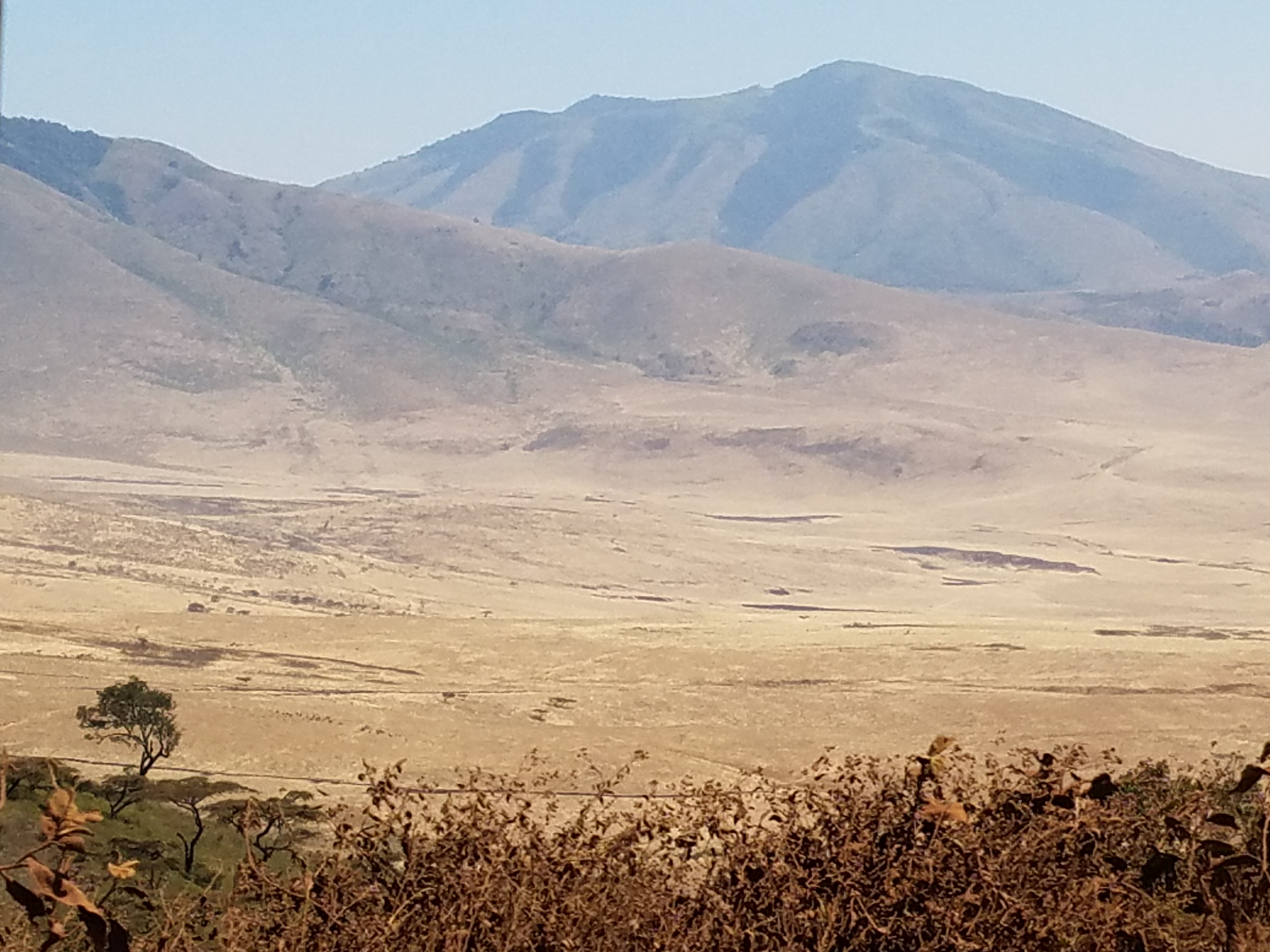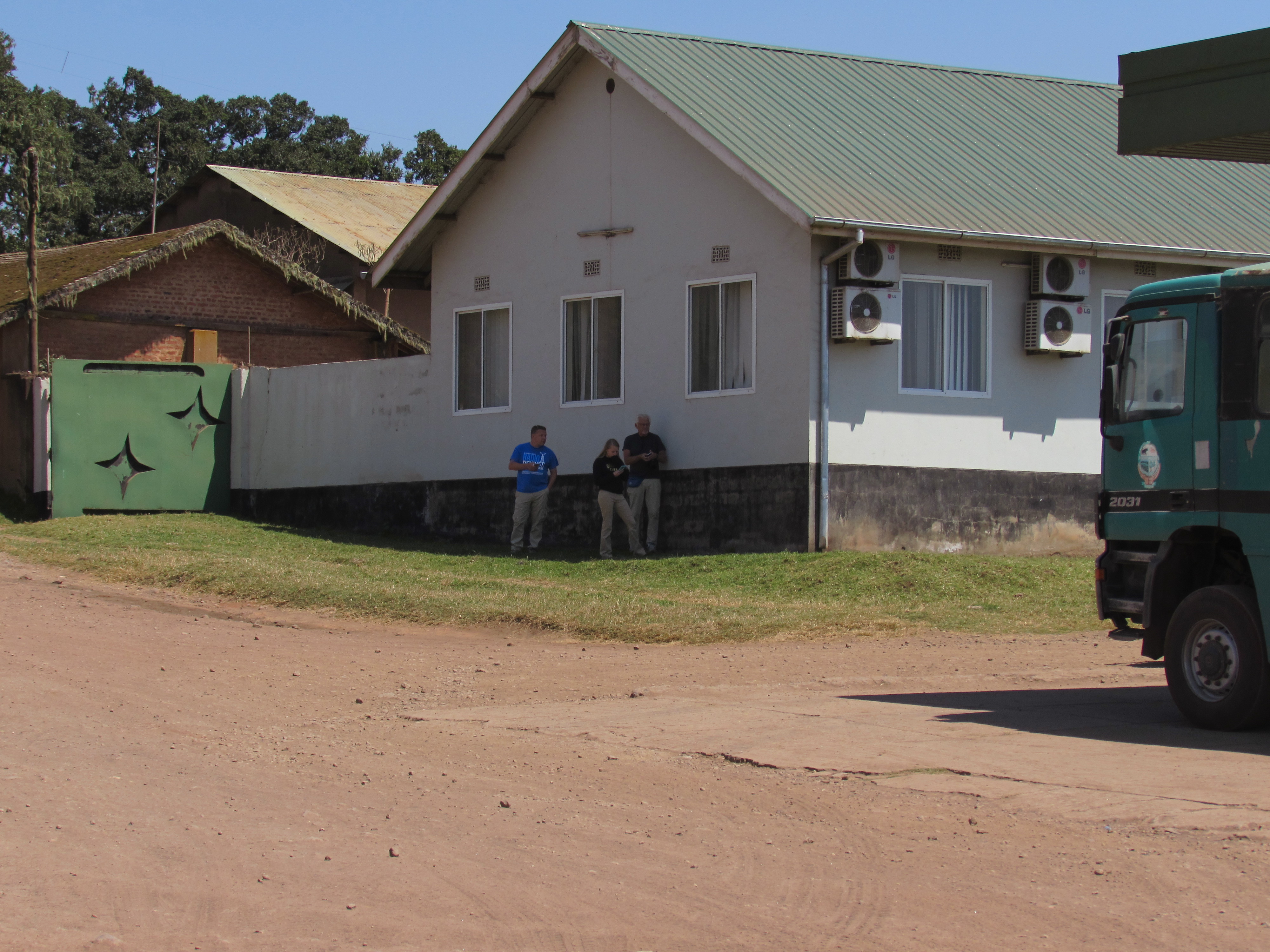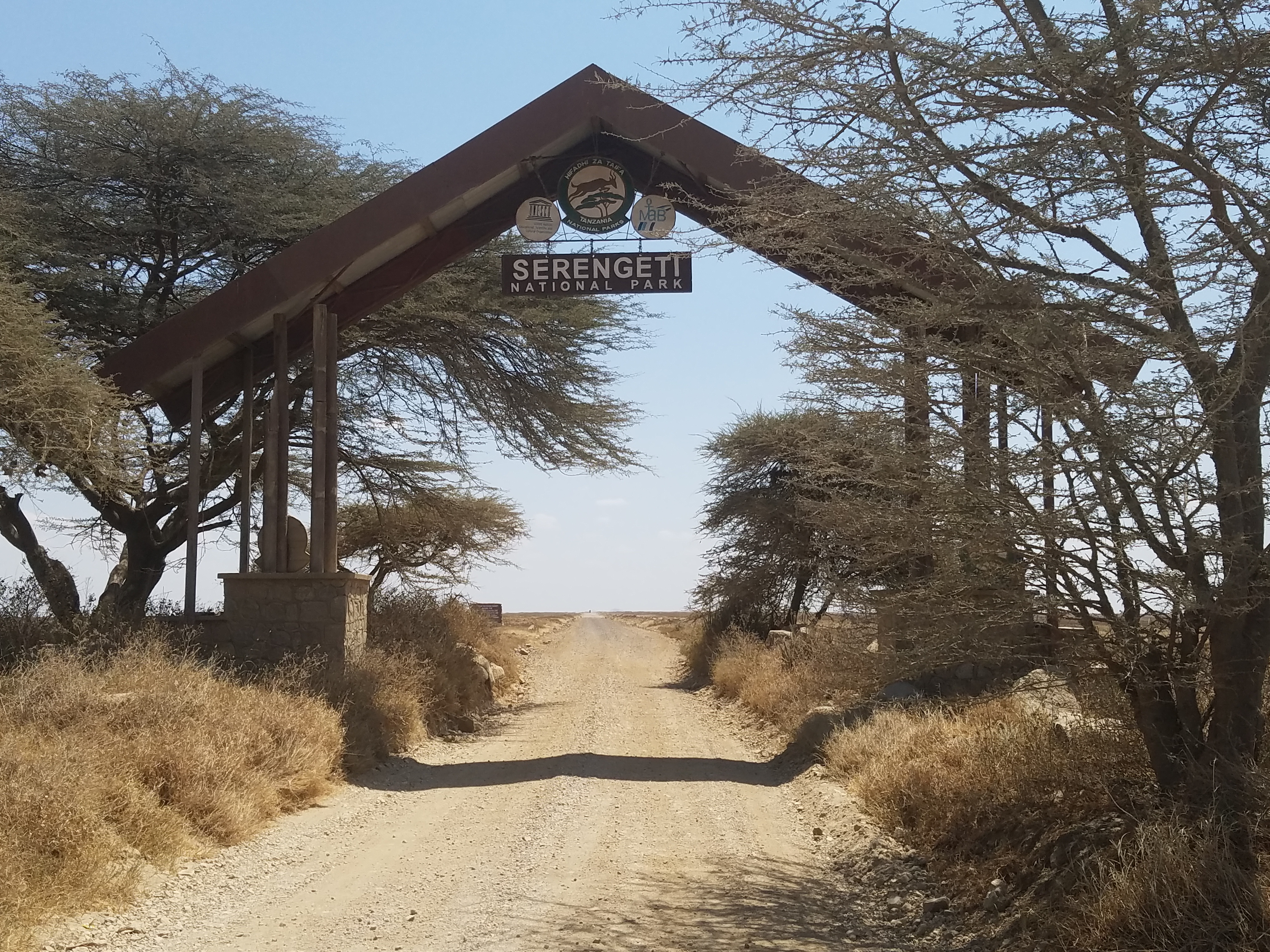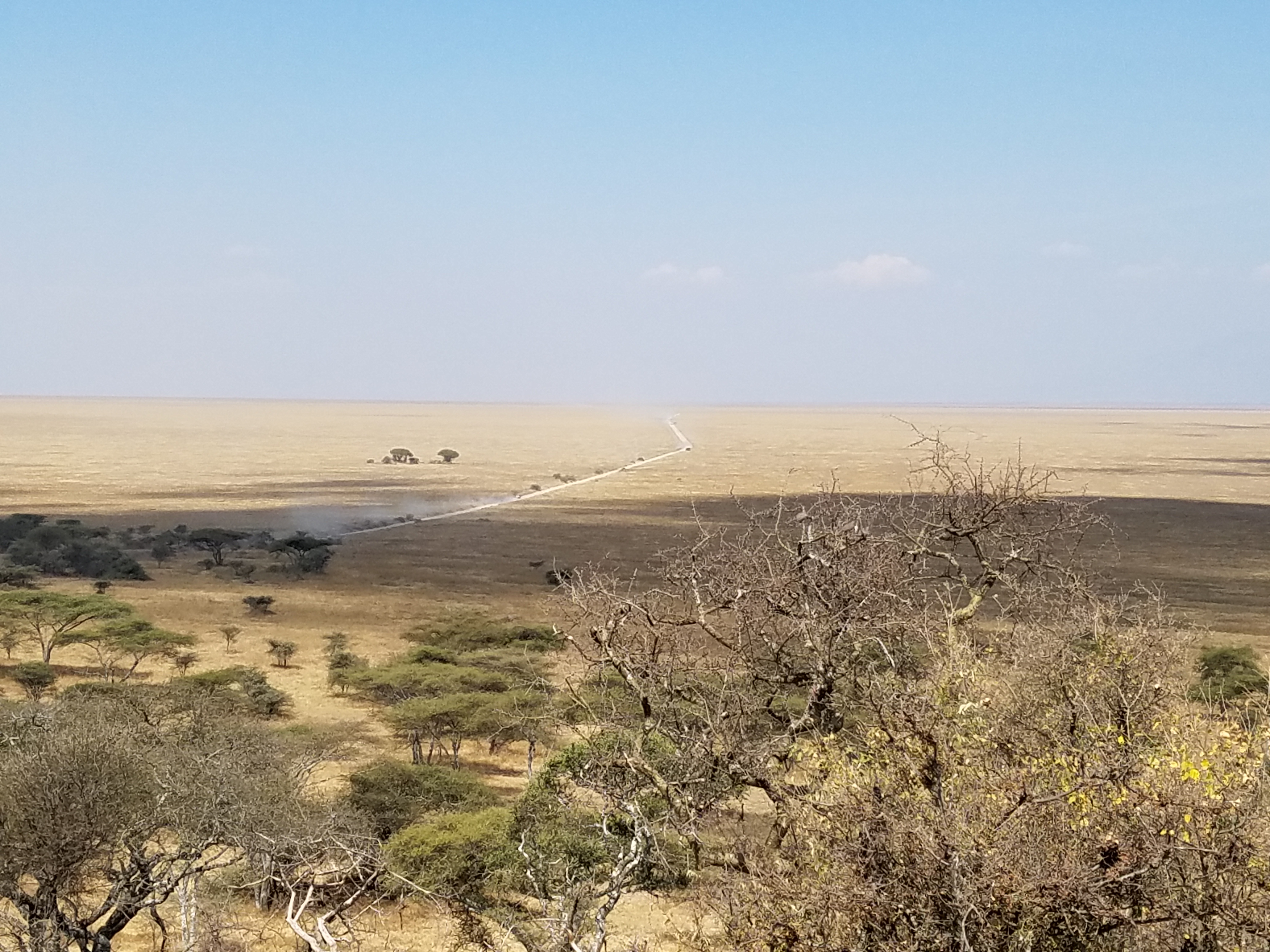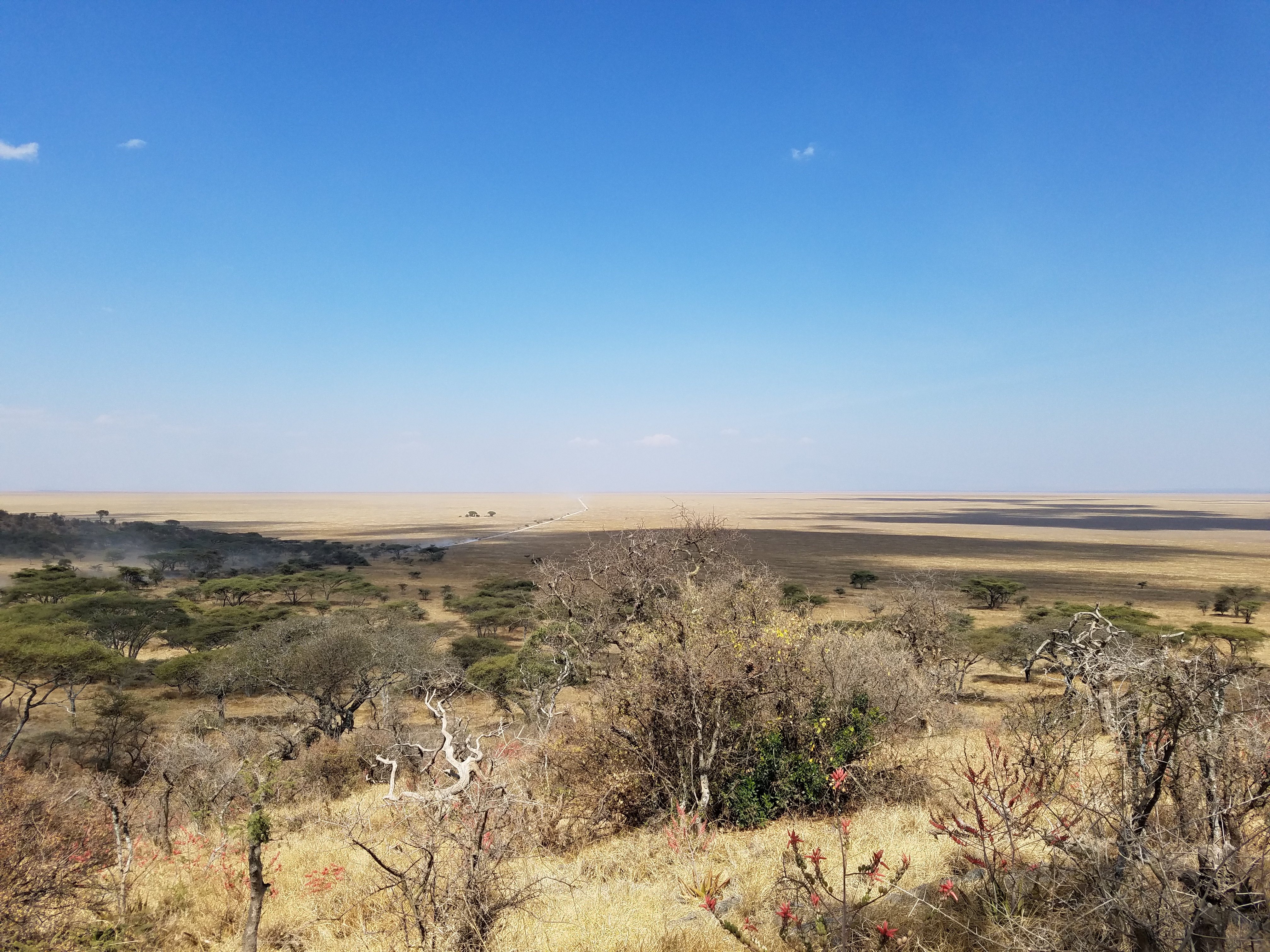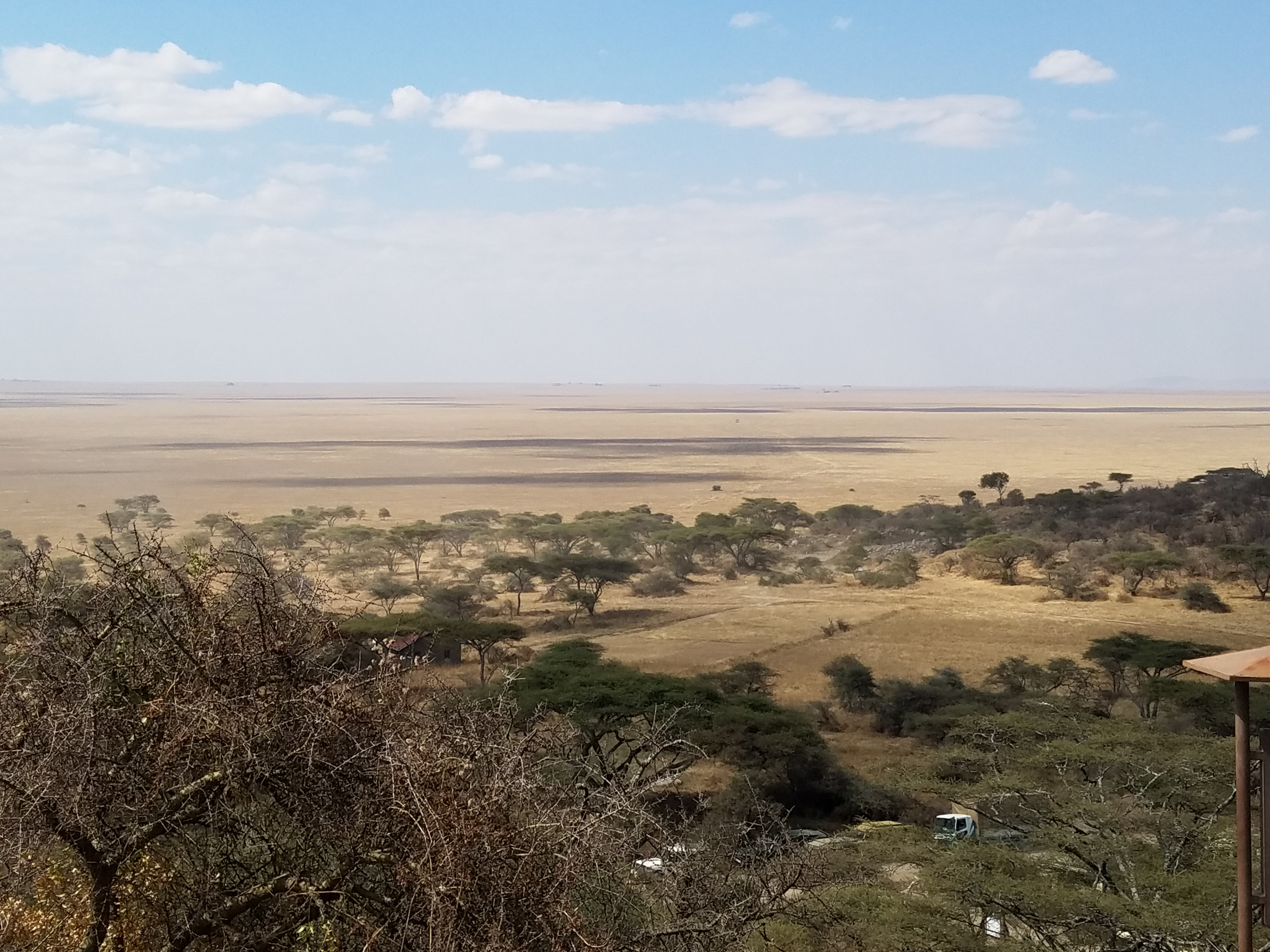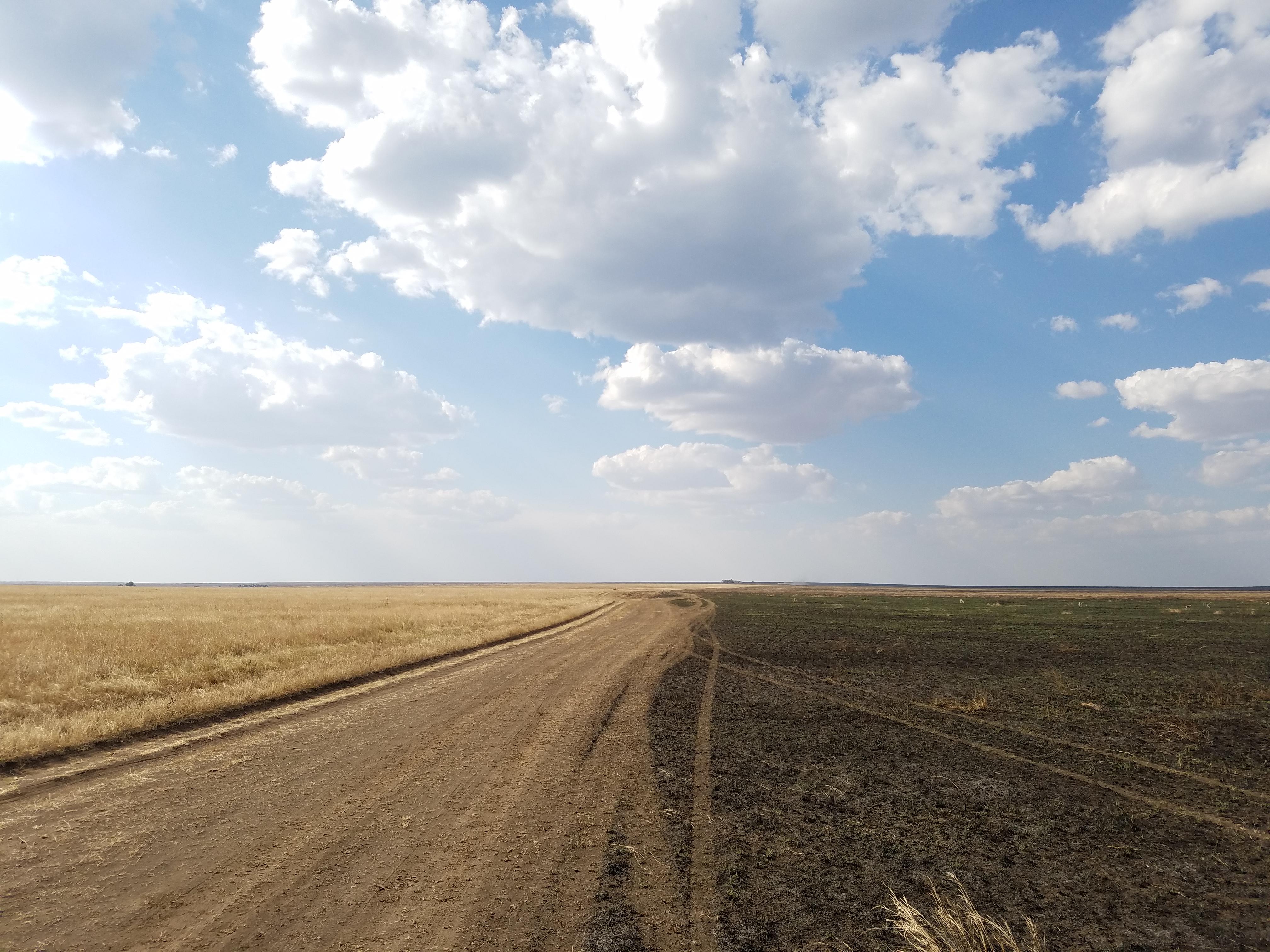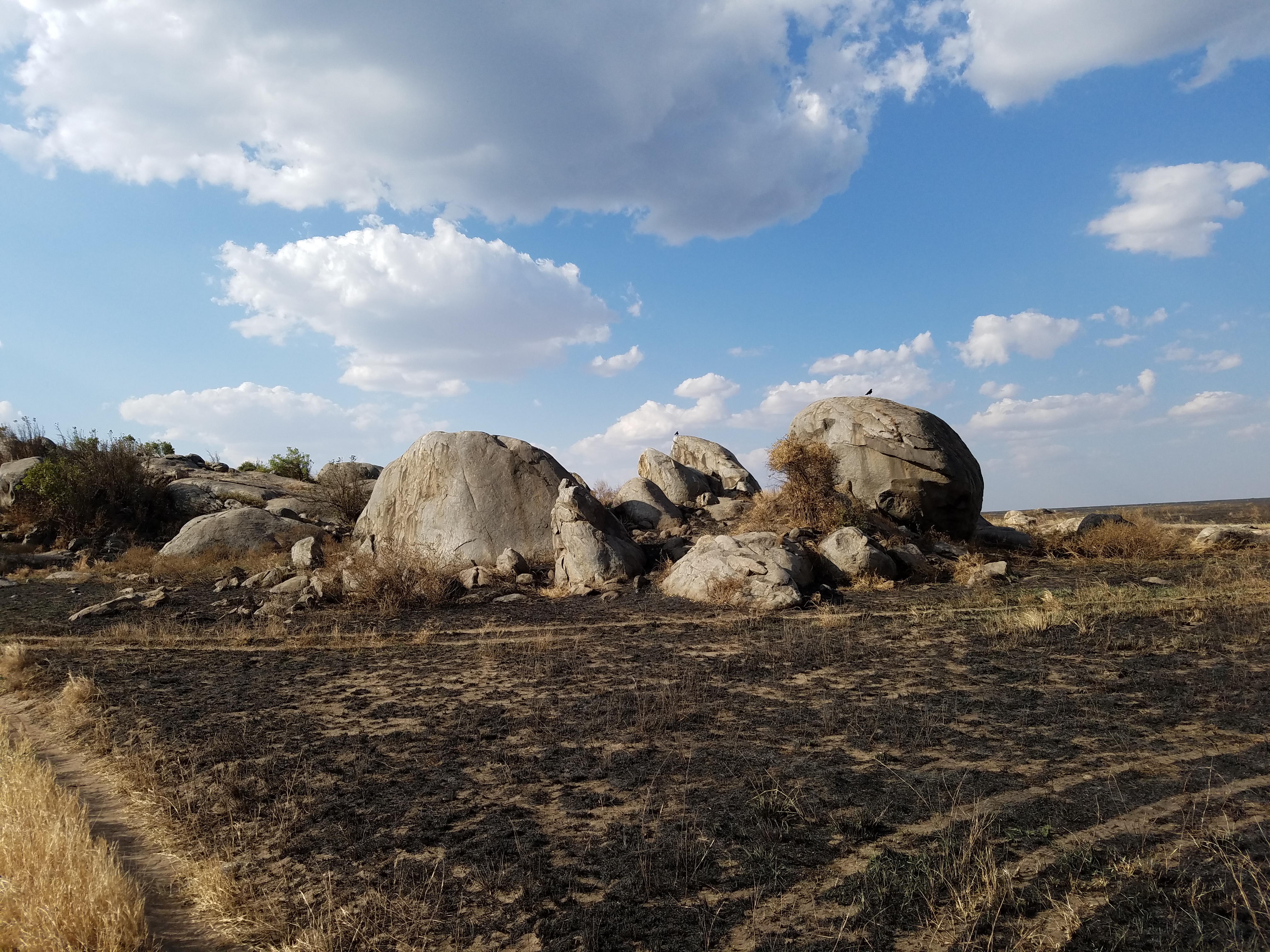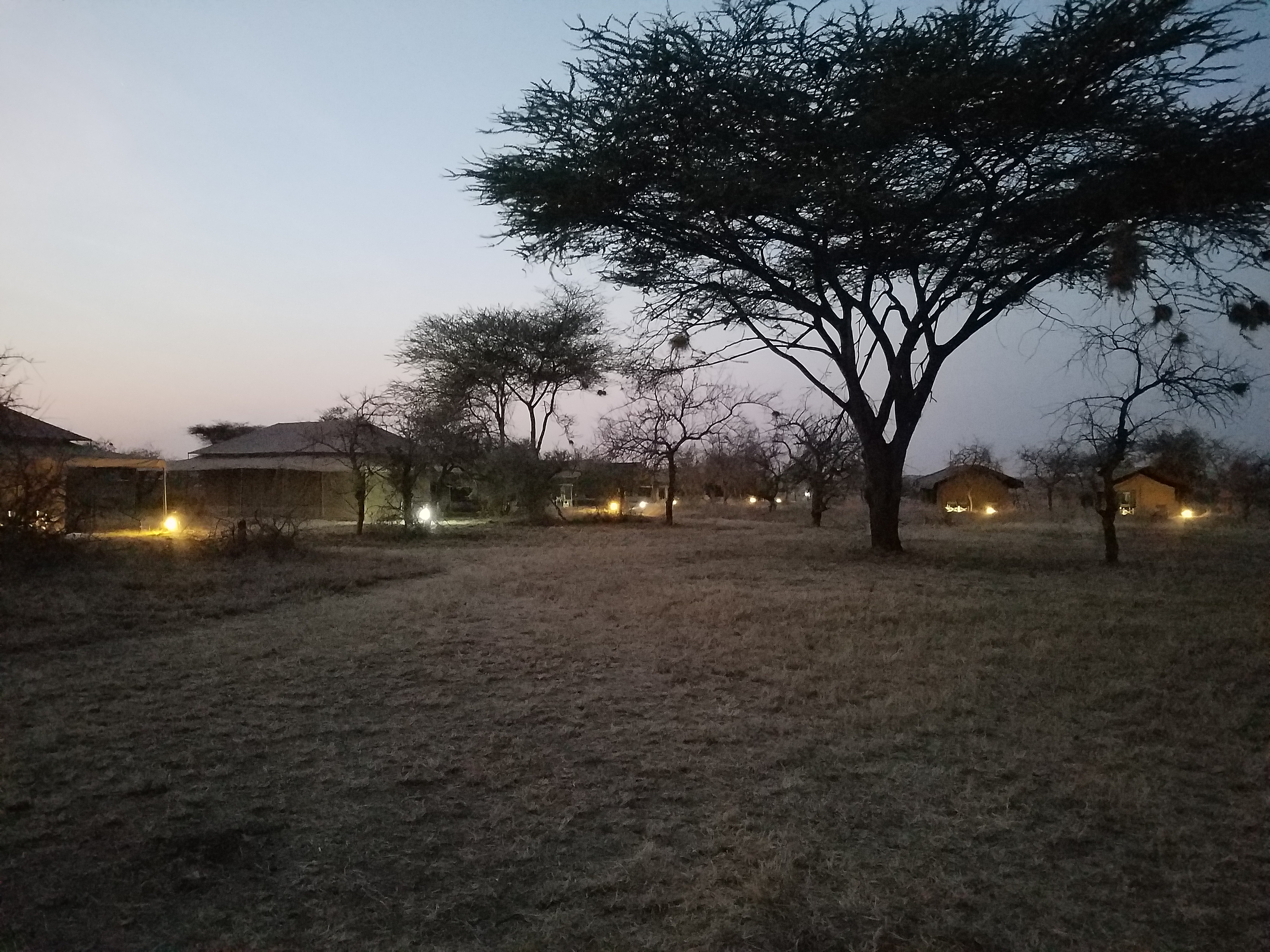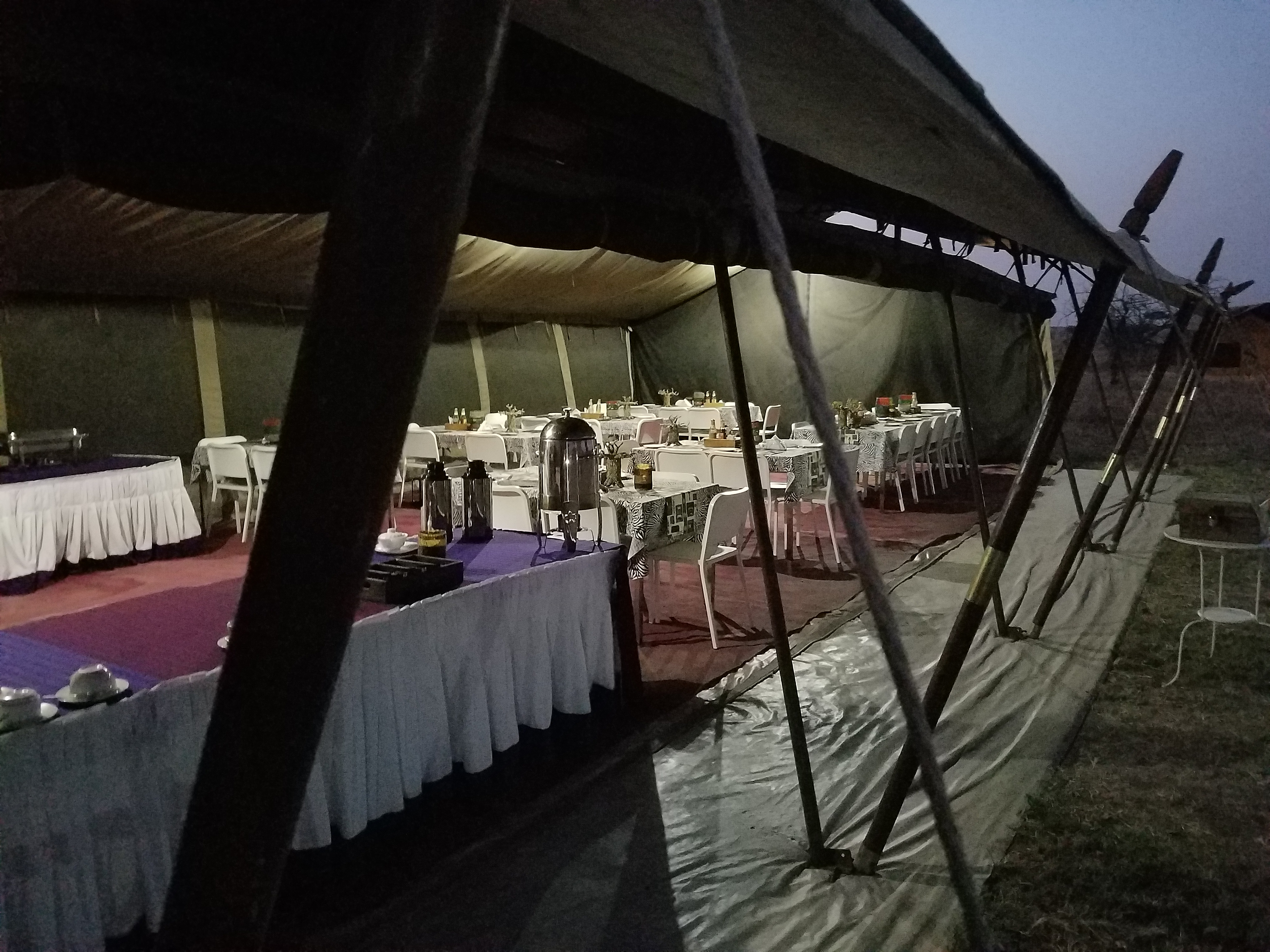(dedicated to Courtney L. for motivating me to finish this article)
The Serengeti Wild Camp is located somewhere near Seronera, but quite honestly, 100 miles from any real civilization. Sleeping in the middle of the Serengeti was very exciting, yet quite peaceful. No walls or fences to protect us from the predators of the night, we were completely exposed to the wilderness. In the dark hours you could hear the activity around us. A couple Dik-Diks wandered through the middle of our camp while making their calls that sound much like a high pitch cluck from a wild turkey. We confirmed the animals in the morning by the deposit they’d left on the trail to the dining tent.
By daybreak, we were out again on the game drive. It is in the earliest hours of the day that the animals are most active. Although I find it difficult to justify ever being up so early, we were almost immediately rewarded with the most amazing sunrise.
Taylor, who almost never wakes up this early, was also now suffering for a second day with nasty cold. Though she really didn’t have a choice, I applaud her for toughing-it-out and making the best of the situation. Despite feeling rough, she still got excited seeing her favorite animal, the giraffe.
On the hit list for today was more hippos, lions, a leopard, cheetah, and any other exotic species we happen upon. So we move on to the hippo pools. The hippopotamus typically emerges at night to graze on the grass of the plains before returning to their water sheds to keep cool during the day. This morning we had found most of them already submerged back under the water.
As I have mentioned before, the Tanzania has a plethora of exotic birds.
 Unfortunately, I don’t know the name of this bird
Unfortunately, I don’t know the name of this bird
For months leading up to the trip, I’ve heard Connor talk about his favorite animal to be found in Africa, the Hyrax. Although it looks much like a large guinea pig or rodent, the hyrax has similar teeth, toes and skull structures as the elephant. These little animals actually share similar ancestry as the elephant. Although, I would have never found them, Connor spotted a few throughout the day.
The quest on most safaris is generally to encounter all of the “Big 5” animals. The term “Big 5” was coined by big-game hunters for the animals which are typically the most difficult and dangerous to hunt on foot. They include the elephant, rhinoceros, lion, leopard and cape buffalo.
Although not one of the “Big 5”, my favorite was another big cat, the the ever-elusive cheetah. We had the good fortune to find one this day and he provided us a great photo shoot.
Even with all of the other sightings on this drive, it was the lions that seemed to steal the show. The opportunities to see these magnificent creatures in their natural habitat seemed to be endless.
With the hours slipping away, we made the trek south back toward the Ngorongoro Crater. Knowing everyone’s dislike for the long and dusty road that brought us into heart of the Serengeti, Peter took an alternate route that kept us far from all of the other vehicles. The much less traveled path took though a Massai “village”, where we made a rest stop, and then along some more remote and rugged roads. It was definitely the better route.
We arrived at our final overnight destination the Ngorongoro Wild Camp in the early evening. Located on the outer rim of the Crater, the camp was made up of about a dozen semi-permanent tents affixed upon stilted platforms. They had hardwood floors and full bathrooms with ceramic tiling — again… glamping.
At check-in we ate little fried “donuts” and drank complimentary hibiscus juice. They informed us that after dark, we were not allowed to wander without the accompaniment of a Massai warrior due to the dangerous animals that often wander through after sundown.
This evening’s dining did not disappoint. Via buffet, they provided, in my opinion, the best supper I’d had throughout the trip. Although similar dishes to those thoughout the safari — tender stir fried beef, roasted chicken, rice and different vegetables — here, they were better cooked and much more flavorful.
With full bellies and the anticipation of what we’ll see on the final day of our safari, we retired for the night. All hope was to sleep like a well fed baby.
